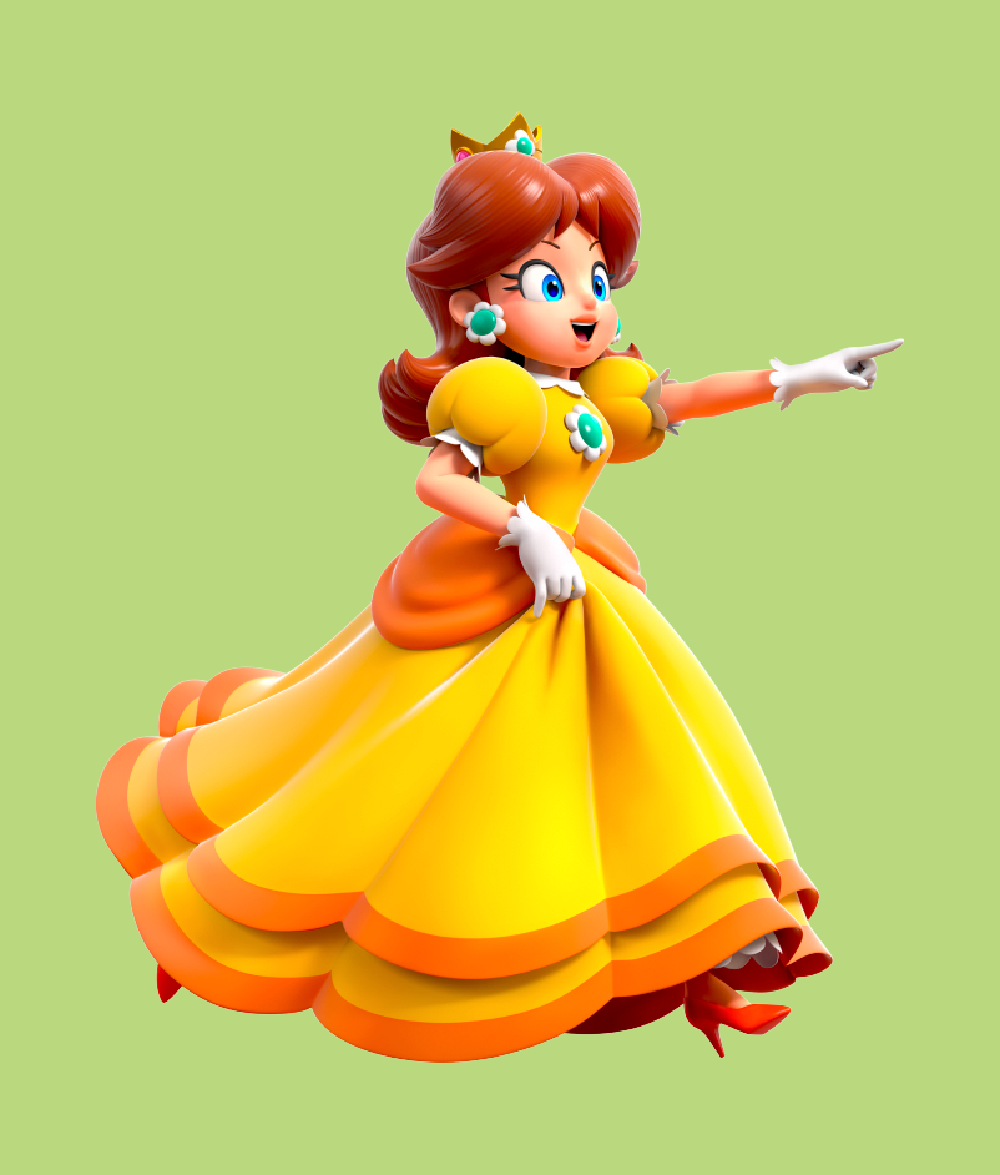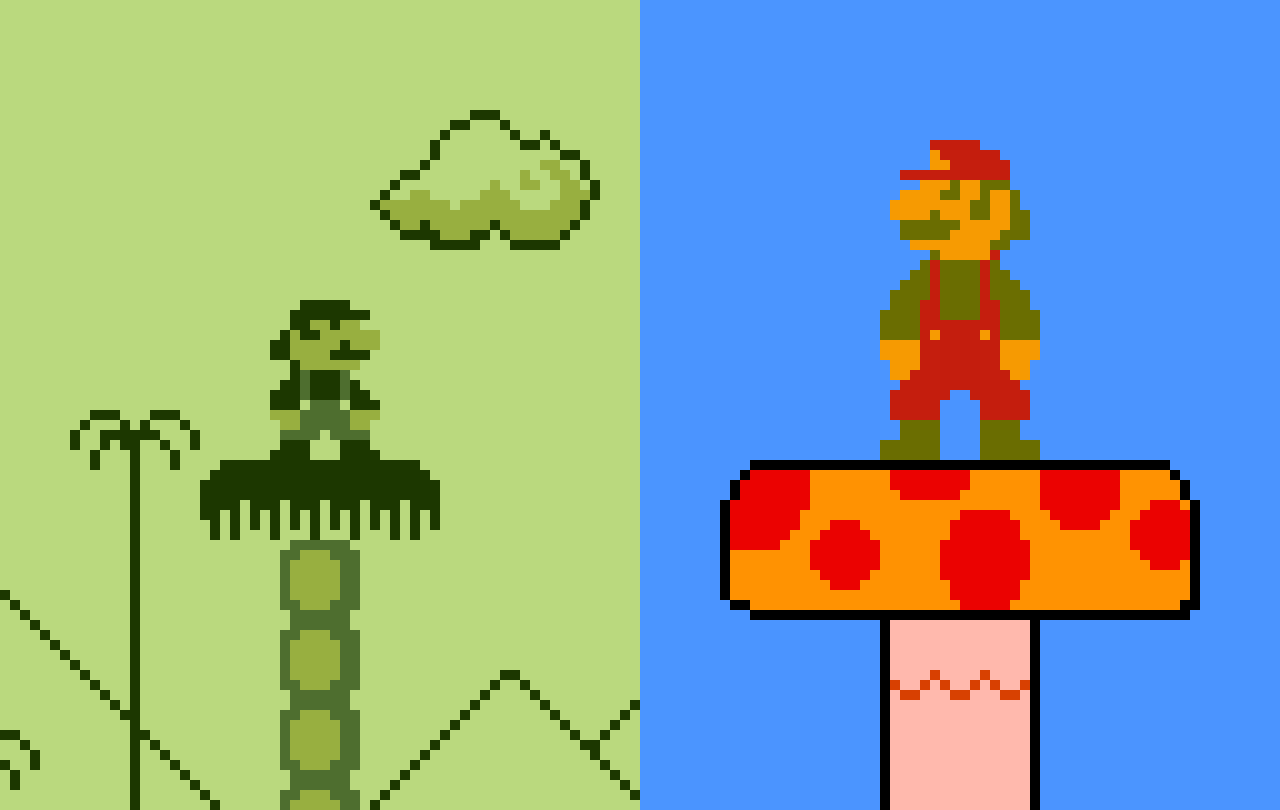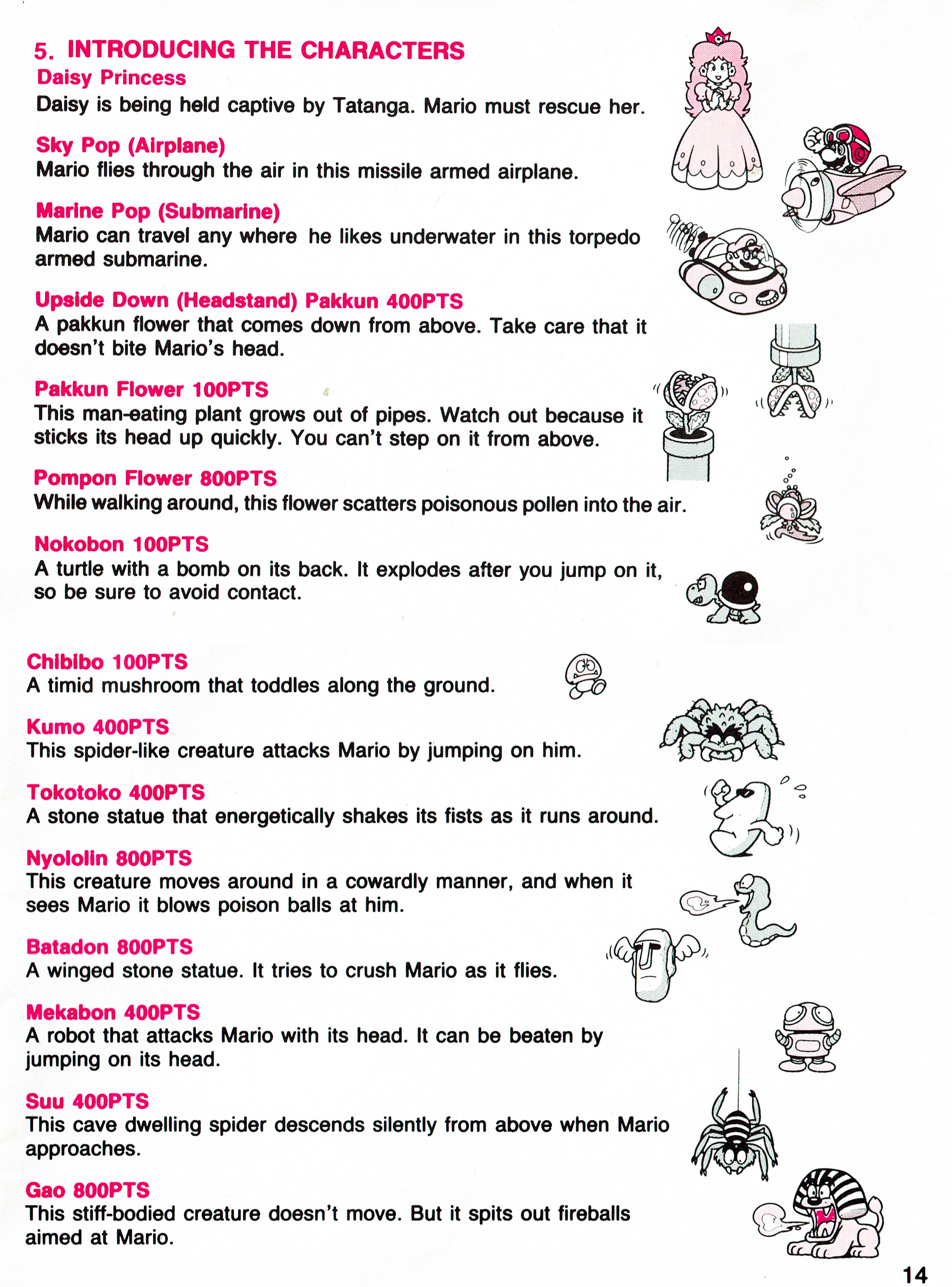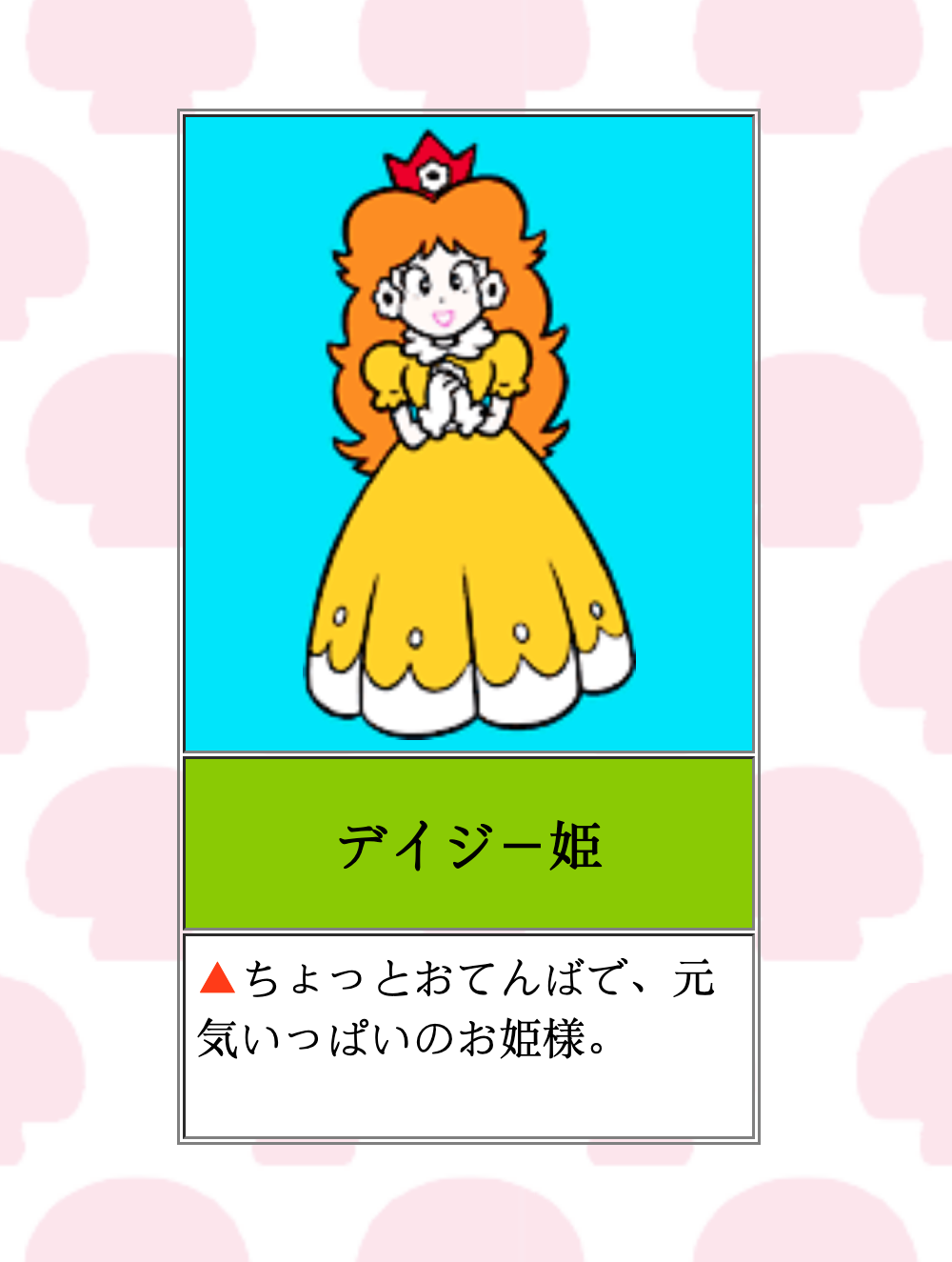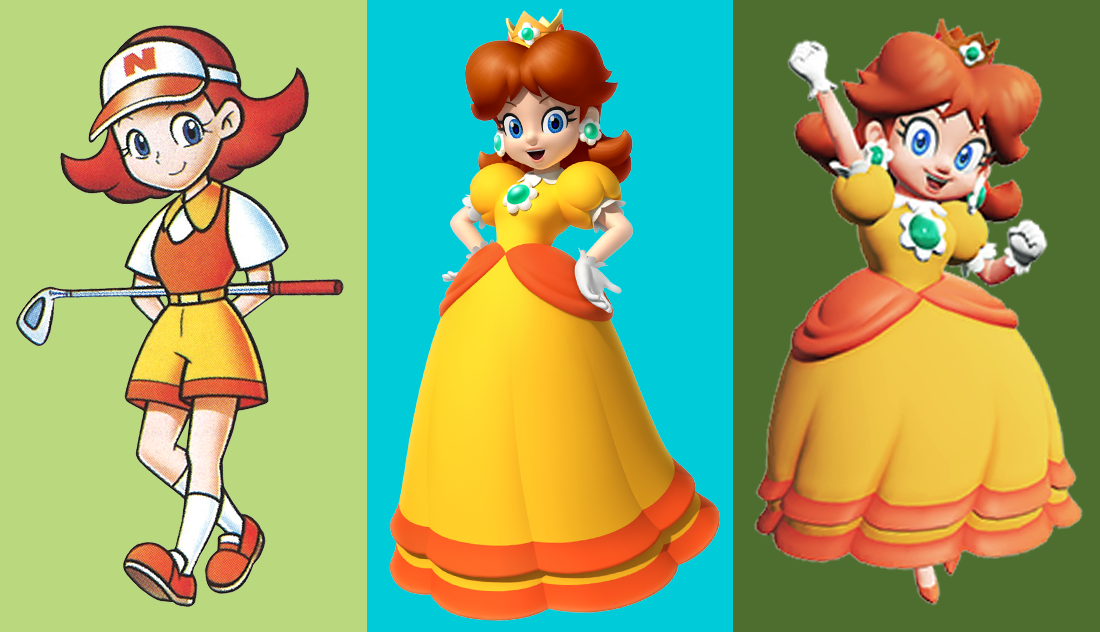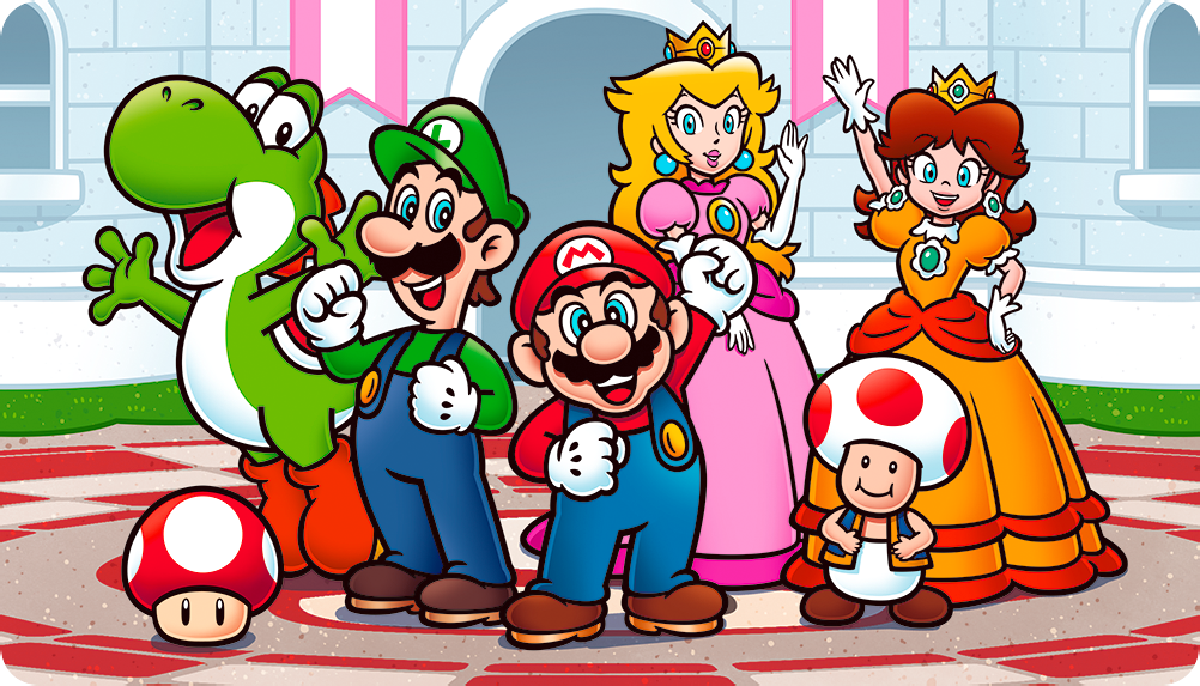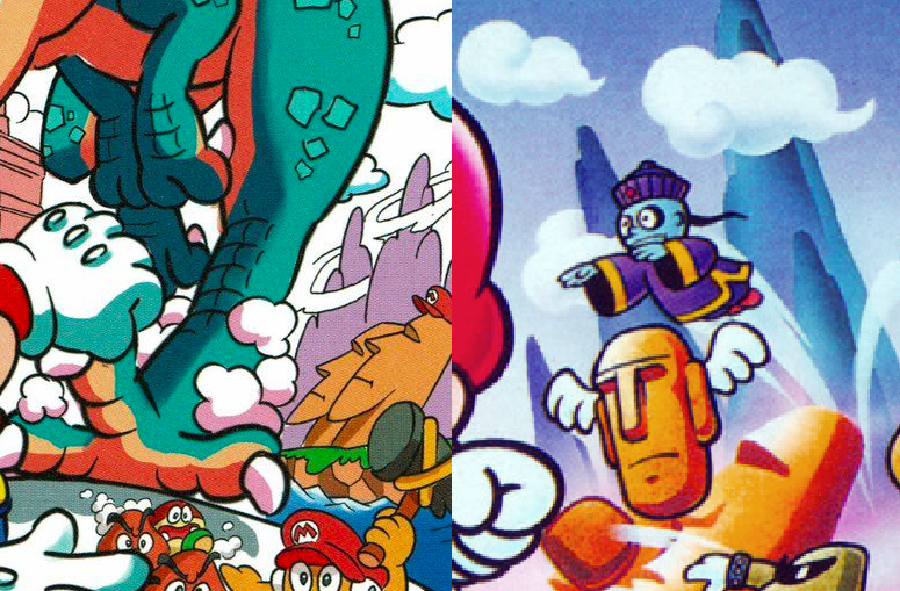Princess Daisy’s Long Road to Being Playable in Super Mario Bros. Wonder
For a certain sort of gamer whose Super Mario fandom began during the 8-bit days, there’s reason to be excited about the release of Super Mario Bros. Wonder. Disregarding the New Super Mario Bros. series, which since 2006 has been featuring Mario in competent platforming adventurers that lacked the surreal spark of those original NES games, it’s a return to form. In fact, the last 2D platforming adventure Mario went on before the New series, in the style of those original games, was Super Mario Land 2: Six Golden Coins, which was released all the way back in 1992. Since then, Mario’s universe has extended out in all directions, literally and figuratively, to the point that returning to its origins now feels novel.
And then there’s another sort of gamer, who’s just really stoked about getting to play as Daisy. They’ve been wondering when she would get her chance to slide down the flagpole with the rest of the crew. Daisy is, after all, the Luigi to Peach’s Mario in more ways than one, and many characters newer than her have already been given a playable role in mainline Mario games.
She’s running excitedly away from B-tier status. Take that, Waluigi.
I decided to look into that and explore how Nintendo has treated the character since her introduction to the franchise. It’s been a circuitous route, for sure, and it all begins in the creamed spinach color of the Game Boy.
A Tiny Kingdom Far Away
Initially planned as the bundled title arriving with every Game Boy, Super Mario Land ultimately lost that honor when it was deemed that Tetris was the superior pack-in option. That’s a knock against Super Mario Land, right from the start, and then on top of that, this game had the unenviable task of distancing itself from its celebrated console cousins.
That’s no mean feat, especially because Super Mario Land was a smaller game, and in more than one way. It has only twelve levels, as opposed to the 32 in Super Mario Bros, for one thing. And in order to display on the tiny Game Boy screen — 160 pixels wide by 144 pixels tall — Nintendo R&D1 shrunk Mario down to about half the height he stood in the original Super Mario Bros. Any bigger and it might have made the screen feel claustrophobic and make it harder to see what’s coming ahead — to do the things players were trained to do in a Mario game, basically. As a result, compared to the console adventures, Super Mario Land gives you the feeling that you’re playing from further away, maybe watching the action through binoculars.
A pixel-to-pixel comparison of Super Mario Land (left) and Super Mario Bros. (right). And yes, believe it or not, the one on the left is big Mario.
Different creative leads might have tried other solutions to the problems posed by the Game Boy display, but notably Super Mario Land is the first Mario platformer not to benefit from the oversight of Shigeru Miyamoto, the creator of Mario and the custodian of his hop-and-bop adventures going back to arcade title Donkey Kong. Instead, Super Mario Land was directed by Satoru Okada, who worked on Metroid and Kid Icarus, and produced by Gunpei Yokoi, Miyamoto’s game design mentor, among many other things. Together, Okada and Yokoi created the Game Boy, so they would have been motivated to make Super Mario Land into something that did more than just underscore the system’s limitations relative to the Famicom/NES. Their tactic in accomplishing this, it seems, was to make Super Mario Land feel different — not a lesser version of a Mario game, but something with its own weird flavor.
Curiously, this game’s version of Mario handles like a throwback to the original Super Mario Bros. — slow and heavy compared to the most recent outing at the time, Super Mario Bros. 3. This did not necessarily result from the constraints of the Game Boy. The sequel, released three years later, has Mario moving a lot more like he does in Super Mario World, so I view the physics of Super Mario Land as a conscious choice, with the creators trying to suggest that this game is an alternate take on the original installment. It *feels* like the game that turned Mario into Nintendo’s biggest star, but it takes that familiar gameplay to weird places that suggest a reinvention of certain core play mechanics.
For example, in this game Mario cannot stomp Koopa Troopas and expect to kick their shells, because the turtle-looking enemies weren’t Koopa Troopas. They were Nokobon (ノコボン), from the Japanese name for the enemy (ノコノコ or Nokonoko, meaning more or less “the state of being indifferent to one’s surroundings and walking around”) and onomatopoeia for the sound of bomb going off. After being stomped they did, in fact, explode. Goombas appear in this game as well, and function more or less as they did on console titles, but they’re identified in the English instruction manual again by their Japanese name, Chibibo (チビボー), a combination of the Japanese name for the character, Kuribō, and chibi, “small,” perhaps a nod to the smaller visual display of the Game Boy.
When Super Mario Land was made available on the Virtual Console in 2011, both the Nokobon and the Chibibo enemies were given localized names, Bombshell Koopa and Goombo, but it’s interesting that previous English-language editions did not do this. All new enemies retained their original, Japanese names as well, lending the translated version a sense of “otherness.”
Along similar lines, the backgrounds in Super Mario Land offer up none of the cloudbushes and field horsehair plants of the original game, and in their place are line art renderings that often evoke real-life landmarks such as the Egyptian pyramids or the maoi heads of Easter Island. And that is because the setting of the game is Sarasaland, a strange new place with its own royal head of state, Princess Daisy. Does she look essentially like Peach in a new costume? Sure. And were those cosmetic changes essentially impossible to reproduce on the Game Boy, making her even harder to differentiate from the series’ No. 1 princess? Again, sure. But the game makes a point of referring to Daisy by name onscreen, so anyone playing would understand that this is a new character being introduced into the mythos. This is not the regular princess. This is somebody new.
My personal headcanon for the main three Mario princesses is that they follow the order of power-ups in the original game. First you have the mushroom, represented by Peach, who is the reigning monarch of the Mushroom Kingdom. Then you have the flower, who in this case is Daisy. And then you have the most powerful of all three, the star, who would be represented by Rosalina. However, I think there’s a different explanation for how this new character got her name.
Daisy’s homeland, Sarsasaland, gets its name from the Japanese sarasa (更紗), meaning “calico, chintz or printed fabric.” There’s a longer explanation of this term I will give in the miscellaneous notes section, but for now know that there’s a special relevance to this character and this place name. The primary dictionary definition of calico is a heavier cotton cloth, but the word has also come to mean a certain sort of printed fabric, otherwise known as chintz, and the patterns on it were often (but not always) of flowers.
In conclusion, Sarasaland is a land of contrasts. Thank you.
That alone could account for Daisy’s name, but I think there’s a deeper read here. Because different calico fabrics laid next to each other can make for an eye-catching, contrasting design, it’s frequently a material used for patchwork quilts. I think Sarasaland itself can be seen as a sort of patchwork quilt setting, because it’s divided into four areas with distinctly different themes that don’t exactly go together but overall give you the sense of taking a tour through an eclectic land. In order:
There’s Birabuto Kingdom (ピラプト王国, or Piraputo Ōkoku), which looks like ancient Egypt and is ruled by a sphinx boss, King Totomesu. Its name probably comes from a combination of the first two syllables of ピラミッド, piramiddo or “pyramid,” and the last two of エジプト, Ejiputo or “Egypt.”
There’s the oceanside Muda Kingdom (ミューダ王国 or Myūda Ōkoku), which is full of UFOs and robots and is presumably a reference to Bermuda and especially the sci-fi paranormal goings on in the Bermuda triangle. Its boss is the giant dragon Draganzamasu.
There’s Easton Kingdom (イーストン王国 or Īsuton Ōkoku), which looks like Easter Island and is resulted by the stone head boss Hiyohoi.
And finally there’s the ancient China-themed Chai Kingdom (チャイ王国 or Chai Ōkoku), hopping zombies and all, which despite obvious tea associations probably comes from チャイナ (Chaina, “China”). Its boss is a cloud that shoots chickens at you. It’s super weird.
I’m probably reading too much into all this, but I like how the fabric being referred to in the name of Super Mario Land’s setting can explain both why Daisy became the flower princess and why this place is composed of several distinct, disparate places situated side by side. Despite all the thought that may have gone into naming it, however, no subsequent game has ever bothered to go back, not even for a Mario Kart track, and Sarasaland has become something that persists in reference only, usually in bios of Daisy onscreen or on a page. Also, when it’s referred to now, it is sometimes shorthanded as a desert kingdom, presumably because the Egypt-themed first world of the game is the one people remember.
Though Daisy looks essentially like Peach’s twin in the materials associated with Super Mario Land, Nintendo was already planting the seeds for Daisy’s rambunctious personality. Nintendo’s official Japanese site for Super Mario Land describes her as “a slightly tomboyish and energetic princess,” which at the time was a matter of… “Sure, I guess we’ll take your word for it,” because that’s never conveyed in the game, but all these years later is a pretty apt summary of Daisy’s personality. “Tomboyish” is also the extent of the description of her personality given in a 1994 Mario character encyclopedia.
Translation: “Deijī-hime (Princess Daisy), a slightly tomboyish and energetic princess.”
It might seem basic, but given that Peach had previously been tasked with embodying all things feminine in the Mario games, this seems like an easy way to tell players how this other princess was different — the less girly of the two princesses who wear gowns, high heels and crowns everywhere they go, which is to say still pretty girly but just slightly less so.
Player Two — for Girls!
Super Mario Land ends with Mario blasting the evil spaceman Tatanga into oblivion, rescuing Daisy and then flying away with her in a rocket-powered jet. Judging by the length of time it took for Daisy to get another thing to do, it seems like Mario took her somewhere really far.
Her next appearance hardly counts: 1991’s NES Open Tournament Golf, where she and Peach are relegated to serving as caddies for Luigi and Mario, respectively. If you didn’t have the instruction manual, which specifically shows Daisy in her signature colors and labels her with her name, you wouldn’t know she’s even in the game. As you play, Peach occasionally pops her face into the sidebar to beam beatifically at you, but it’s always Peach — pink dress and blond hair, no matter whether you’re playing the game as Mario or Luigi. The closest Daisy gets to appearing is on the title screen, where pixel art re-creates the instruction manual graphic but botches the coloring on Peach, who’s in a green dress, and Daisy, who is in a blue dress and has Peach’s hair color, even though red and yellow are used elsewhere in the title screen.
The earrings are maybe a giveaway that it’s Daisy? But they really made it hard to tell.
There’s a similar slight in the 1991 printing program Super Mario Bros. Print World, which features Daisy’s Super Mario Land art but erroneously gives her Peach’s color scheme. The indignity.
You’d think being a character in the 1993 Super Mario Bros. movie would have helped Daisy out, but no, not really. The dismal box office prevented Nintendo from making another movie for three decades. While it’s received somewhat of a reappraisal by fans in more recent years, it has largely seemed like a chapter in Mario’s history that Nintendo would rather skip over. That said, the movie does have Samantha Mathis playing the central princess in peril. While she is essentially Peach, even being the daughter of a monarch associated with fungus, the script calls her Daisy, presumably because at the time the film was released, that character’s name in English-speaking territories was still Princess Toadstool, and that just didn’t work for Hollywood. She’s Daisy in name only, but she is there, theoretically giving people who never played Super Mario Land a reason to know that there was another princess.
In 2000, Nintendo released Mario Tennis. It’s a counterpart to the 1999 installment of Mario Golf, which rounded out its stable of playable characters with randos like Plum and Maple, who despite those names are not part of the Super Mario princess club but instead are just ordinary humans. Mario Tennis, however, pulled in forgotten characters like Birdo, Donkey Kong Jr. and Daisy. (It also invented Waluigi, so there’s also that.) Moving on from this, Daisy has been playable in basically every Mario spinoff game ever. It’s possible Nintendo would have pulled Daisy off the bench eventually anyway, but just looking at the list of games she’s appeared in, it really does seem like it was Camelot, the developer of Mario Tennis, that plucked her from obscurity and put her on the path to becoming the series’ No. 2 female character.
Left to right: Mario Tennis for the Nintendo 64, Mario Party 3 and Smash Bros. Melee.
This version of her, however, looks different than how she’d look shortly thereafter. As she initially appeared in promo art for Mario Tennis, Daisy had slightly darker hair than she’d had before or after and a darker skin tone than other human characters. It’s a shift from the official Super Mario Land art, for sure. Without getting into the rather nuanced matter of racial representation in Mario games, I can only guess that those coming up with her new look decided that the princess of a desert kingdom should sport a tan. Daisy only looks like this for Mario Tennis, Mario Party 3 and Smash Bros. Melee, where she appears as both a trophy and an alternate color scheme for Peach. (And if you really want to see the difference in skin tones, toggle between any of Peach’s color variations and the yellow one, which is based on Daisy.) Mario Party 4, which debuted a year later, was the first game to have Daisy looking more or less as she does today, with shorter, lighter hair, lighter skin and a different face. In fact, it really looks like her face was lifted from Azalea, a third normie female character who appeared in the Nintendo 64 Mario Golf.
Left to right: Azalea in Mario Golf for Game Boy Color, the new Daisy as seen in Mario Party 10, and the Super Mario Bros. Wonder Daisy
I would genuinely be curious to know why Nintendo changed Daisy’s appearance so drastically. I wonder if it’s as simple as someone at Nintendo spotting Azalea and thinking that this original character better captured the look they wanted for this other princess. Myself, I actually preferred how she looked before. With one face or another, however, Daisy has been a playable character in nearly 70 games, counting Super Mario Bros. Wonder, which puts her in an interesting place; she’s not the most famous character in the franchise she appears in, but she’s racked up more appearances than a lot of characters who are arguably better known than she is. Like, I’m not sure how many games Ryu from Street Fighter is playable in, but I’d guess that Daisy has been playable in more.
Daisy also made it so Peach was no longer the sole playable female character in Mario games. But that special relationship with Peach would also mean that she hasn’t developed into her own character as much as a lot of other “clone” types in the Mario games have.
The Redheaded Stepchild of Mario Games
As many franchises do, the Super Mario games have a tendency to create new characters in the image of existing ones. Luigi, famously, began as a palette swap of Mario, but then as he showed up in more and more games, Nintendo slowly made him look different than Mario, at first in official art, and then eventually his in-game appearance reflected this too. It stands to reason then that if Mario is the default for human male characters in this universe, then Peach should be the default for human female characters, and as a result a lot of characters look like her — not just any princesses but a very Peach kind of princess, wearing a solid-color dress with a single accent color, rocking a brooch, and styling her hair in a way that looks vaguely Farrah Fawcett-like even if it’s probably a nod to Princess Diana. Although there are others, Daisy and Rosalina are the two most popular examples of characters being made in the image of Peach.
While Rosalina debuted in Super Mario Galaxy already doing her own thing, being some kind of mystical space mother with occasional deity-like powers, she actually looks a great deal like Peach — arguably more than Daisy does. Daisy, for all her tomboyish moxie, however, has never really been given her own thing, for lack of a better word, mostly because before Super Mario Bros. Wonder she’s been relegated to spinoff games.
Here’s what I mean.
When Nintendo announced that Super Mario 3D World would feature the four playable characters from Super Mario Bros. 2, everyone correctly assumed that they’d each retain the characteristics that made them unique: Luigi would still jump higher, Peach would be able to float in mid-air, and Toad would be the strongest, with Mario being the all-around option for people who like to be boring. When it turned out that Rosalina was an unlockable character, it raised the question of what special attribute she’d be given, since she’d never before been playable in a mainline Mario game. What the development team decided on, we’d eventually find out, was a spin attack that encircles Rosalina in stars, because that’s her visual motif. The move also essentially works as a double jump, which I see as a nod to the spacey gravity of the Super Mario Galaxy games she comes from. It’s kind of like how when Wario was made playable in Super Mario 64 DS, he was made the strongman of the group — because he’s beefier than Mario or Luigi, but also he’d been using his bulk for the shoulder slam attack that had become his trademark move in the Wario Land games. For both of these characters, something about the way they functioned in a proper Mario platformer was carried over from and was a throwback to the games that made them popular.
Daisy has never been given anything along these lines. When she was made playable in Ultimate Super Smash Bros., she was a clone, handling identically to Peach and also inheriting her moveset even though those moves don’t make sense for her; Daisy doesn’t have a special relationship with Toad that would explain why she’d be whipping him out in a fight, she never was known for plucking turnips out of the ground and she doesn’t float around on parasols. That’s all Peach. But because she hasn’t been given anything unique in the sports titles and Mario Party iterations that make up the bulk of her appearances, there wasn’t really anything else to pick from. The only substantial change from Peach’s moves to Daisy’s is that Daisy has been given a flower motif — which, to be fair, has shown up in a lot of the sports titles as well. In Smash, however, it’s merely a cosmetic change that hasn’t resulted in a logical “thing” to incorporate into play mechanics. And that’s actually quite odd, especially considering how important flowers are to the spectrum of power-ups in the Mario games.
Daisy’s special shot in Mario Tennis Aces. The flower petals are there, they’re just not doing anything. Clipped from this YouTube video.
When Super Mario Bros. Wonder was announced, Daisy’s inclusion in the roster of playable characters made me suspicious that they wouldn’t retain their special abilities the way they had in Super Mario 3D World. If Daisy is in there, I thought, what would they give her? I suppose that Daisy could have retained the double jump she was given in Super Mario Run, but I was more expecting Nintendo to make the different playable characters function the way they did in the New Super Mario Bros. games — essentially the same, essentially as Mario would, looking different but those visual differences having no effect on game play. And that, of course, is what Nintendo decided.
I’m glad that Daisy finally made the cut, specifically for the reason that SMB Wonder director Shiro Mouri mentioned in a Eurogamer interview about the development of the game: He has two daughters and when they play Mario games, they fight about who gets to be Princess Peach. This is a practical choice, as far as keeping order in the Mouri household, but it’s also a change that acknowledges that there are gamers out there who appreciate having an option as to which female character they can play as. Some people don’t like pink, it turns out.
Myself, I had a feeling Daisy was getting a little more respect from her Nintendo overlords when I went to Super Nintendo World at Universal Studios. When you buy a Power-Up Band, the wristwatch-like dealybob you use to interact with the various park features, you get your choice of characters, and it’s the main five you’d expect… and then also Daisy. No Wario. No Waluigi. Not even Toadette, who’s becoming playable in more and more games. I was actually surprised, because Nintendo hadn’t previously given her a platform like that. And I presume the thinking here follows the thinking Mouri touched on in the interview; park-goers who prefer a female character might also prefer having more than one to pick from.
That does relegate Daisy to being “the other princess,” for better or for worse, but considering how long she’s been part of the franchise, there’s no shame in being the other princess in a mainline Super Mario game.
At last Waluigi didn’t beat her to it.
Miscellaneous Notes
When New Super Mario Bros. Wii was announced in 2009, I can remember someone on some game forum reacting to the introduction of Blue Toad and Yellow Toad with the kind of confusion and anger that can only be mustered by people writing about video games online. This person felt that the invention of new characters was poor form on Nintendo’s part because the Mario games already had characters who represent those colors and who could be playable: Rosalina and Daisy. And then someone responded with a similar level of anger and confusion to this first person, telling them they were a fool for thinking that Nintendo would have these two princesses playable in a mainline Mario game. And at the time I felt the second person was probably right, but all these years later, both characters have gotten bumped up to the A team, at least for one game.
The word calico comes from Calicut, the English name for the Indian port city Kozhikode, which is where Europeans first obtained the fabric. The word made it to Japan via Portuguese, which has a bigger influence on Japanese than you might expect because Portuguese sailors became the first Europeans to reach Japan in 1543. At the time, the Portuguese word for calico was saraça, and while none of the Japanese dictionaries I could find online have saraça in them, two friends with access to physical Portuguese dictionaries told me the word does in fact mean “thin cloth.” Modern Portuguese dictionaries translate calico simply as calicó, but I suppose that the transformation from calico to saraça makes sense for the same reason that coriander ended up as cilantro in Spanish. (They’re the same plant. It is, for all intents and purposes, the same word.)
The word daisy comes from the Old English dægesege, meaning “day’s eye” because the flowers on this plant open in the morning and close in the evening. As a name, Daisy is often considered a nickname for Margaret, which doesn’t actually make sense, if you think about it, even accounting for the weirdness of British nicknames. There’s no etymological connection either, since the name just means “pearl” and was in use as a name before there was an association with flowers. So how did Daisy and Margaret get all tied up together? It’s probably a result of the fact that a particular type of daisy, Leucanthemum vulgare, is called marguerite in French. However, this makes for a special connection to an obscure Mario character who is, like Daisy, a sort of knockoff Peach.
Tiaramisu, looking like a red variation on typical Peach pricess model.
In 2007, Nintendo released Wario: Master of Disguise for the Nintendo DS. It was not well-received and is mostly forgotten today. (Only one character, Count Cannoli, appeared in Super Smash Bros. Ultimate, and *everyone* was in Super Smash Bros. Ultimate.) The game’s big bad is interesting in the context of this conversation, however: It’s Tiaramisu, who looks more or less like a princess-type character, just wearing red, but over the course of the game, she’s revealed to actually be Terrormisu, an ancient demon.
And masked and unmasked versions of the demon Terrormisu, now in pink and looking more blatantly like a bad copy of Peach.
Her name is a reference to the Italian dessert tiramisu, and that’s a whole motif in this game; the other two characters introduced in the game, Cannoli and Carpaccio, get their names from Italian cuisine as well. But in the original Japanese, Tiaramisu’s name is マルゲリータor Marugerīta, which is both a rendering of the Italian form of Margaret and also another food reference, to margherita pizza. She was probably given the name because all the characters were named after Italian food and this particular name happens to be one that sounds like a feminine name, but coincidentally or not, it ties her to Daisy because these two names are connected. Margaret means means “pearl” but is so associated with the flower that it effectively means “daisy” too. In addition to their names meaning basically the same thing, both Princess Daisy and this Wario villain are characters made to look like slightly off versions of Peach. Of course, Margarita is also the original Japanese name of another unrelated Mario character: the Super Mario RPG villain Valentina, who is named after the drink and its association with Jimmy Buffet “parrothead” culture. No, really.
The Super Mario Wiki argues that concept art for Super Mario Odyssey shows that Sarasaland (or real-world imagery recalling Super Mario Land) was considered for inclusion in the game. In the right corner of this image, which was published in The Art of Super Mario Odyssey, you can see maoi statues as well as tall, pointy mountains with clouds wrapped around them. These stone heads look more like the ones in Easton Kingdom than do the Moe-Eye creatures that you encounter in Super Mario Odyssey, but I think the mountains are a more specific reference, because they look like the ones appearing in the Super Mario Land box art, behind Pionpi the jianshi enemy.
Left: a detail from the Super Mario Odyssey concept, showing mountains that are thought to be the ones seen in the Super Mario Land box art (right).
Regarding Peach and Daisy being relegated to mere caddies in NES Open Tournament Golf instead of being playable, it’s worth pointing out that in 1984 Nintendo released VS. Ladies Golf, which did have playable female characters. In fact, the female golfer in that arcade game is the first playable female character in a Nintendo game, and according to Kate Willaert, she might actually be Pauline. More on that in an upcoming Pauline post.
I mentioned in the piece that it’s weird to me that Daisy wasn’t given a special “thing” that had to do with flower power-ups, which have appeared in one form or another in most Mario platformers, the Fire Flower being the best known of them. She is the one associated with flowers, after all. In the way that Toadette was given the Super Crown as her own item that only works for her, Super Mario Land even offers up a special flower power-up that could be Daisy’s personal power-up: the Superball Flower, which is another way that the game subverts the player’s expectations. Rather than giving you the power to shoot fireballs, it gives you the ability to throw a single ball that ricochets off surfaces and can be used to collect coins in addition to killing enemies. The Superball Flower was all but forgotten in the series until it showed up in Super Mario Maker 2, a full three decades after it debuted in Super Mario Land. Which is wild. But since Nintendo remembers that it exists, why not just give it to Daisy? I can picture it now: When she powers up to Superball Daisy, she’s given a green and black dress to hearken back to her origins on the Game Boy. Toss that ball, girl.
Another change Super Mario Land makes from the typical formula is that in this game, Mario gets extra lives not from 1-up Mushrooms but from Hearts. I assume this resulted from the fact that the limited palette of the Game Boy made it so that there would be no way for a player to distinguish between the regular mushrooms, which make you big, and this more special version, so they just assigned it a new sprite. It’s one of the changes that carries over to Super Mario Land 2, I presume for that same reason.
There’s one more calico connection for Daisy, actually. In Bowser’s Fury, Mario encounters five different kittens, and it so happens that four of them correspond to the colors of the cat costumes that Luigi, Peach, Toad and Rosalina get in Super Mario 3D World: green, pink, blue and black. The fifth kitten is a calico kitten. Given Daisy’s association with calico, I think that kitten is supposed to represent her, on some level.
From left to right: a pink cat that isn’t Peach, a blue cat that isn’t Toad, a calico cat that isn’t Daisy, a green cat that isn’t Luigi and a black cat that isn’t Rosalina.
None of the kittens actually, like, Mario’s friends in cat form, of course, and Daisy didn’t end up being in either Bowser’s Fury or the remake of Super Mario 3D World, but still.


